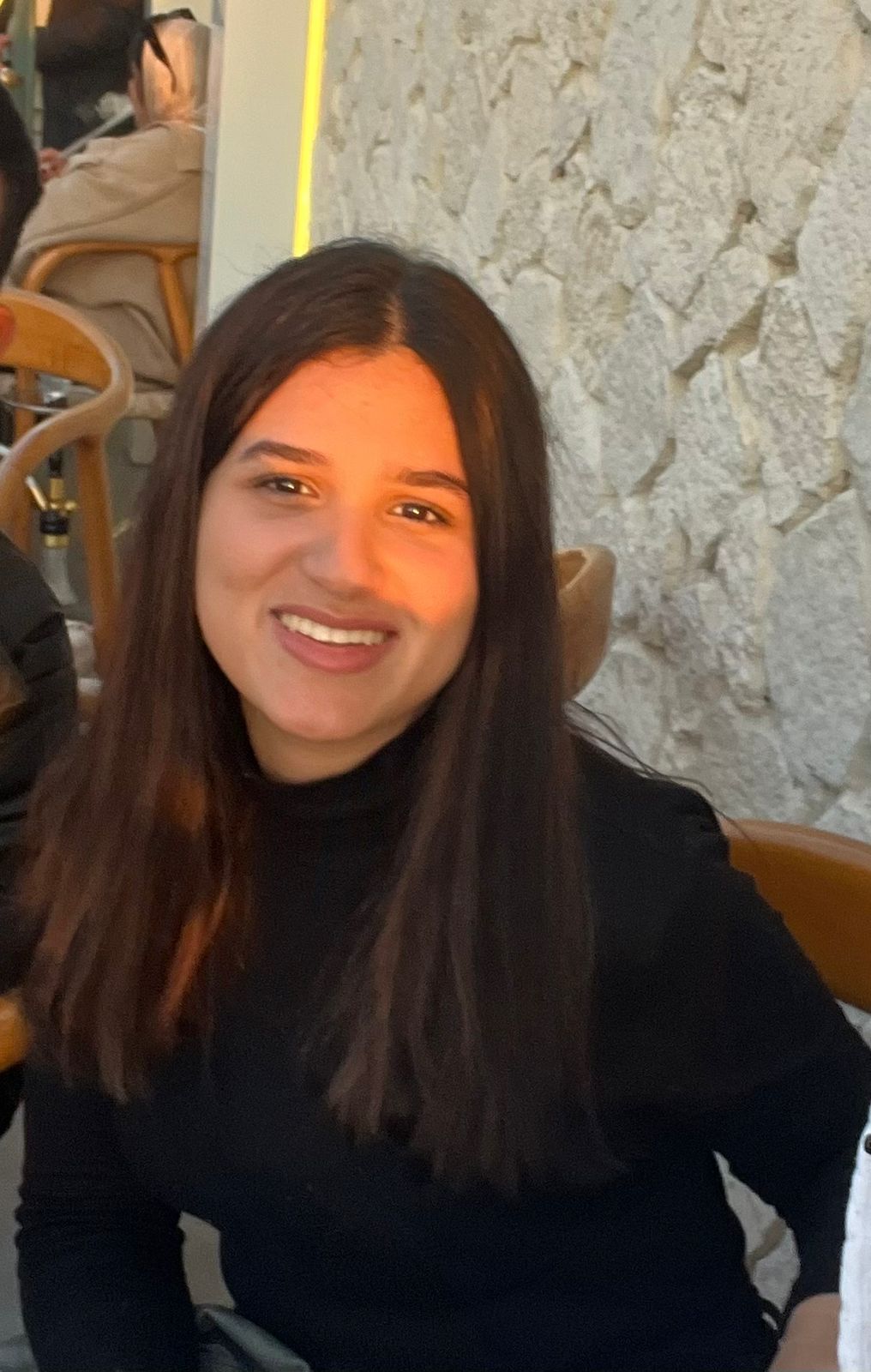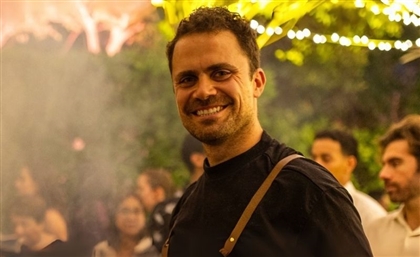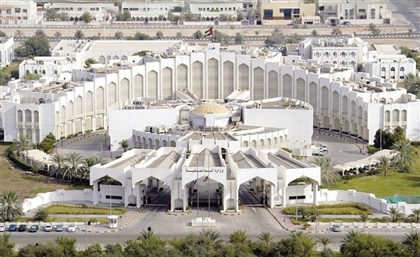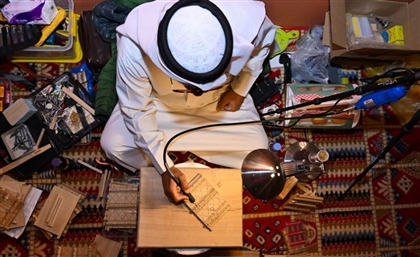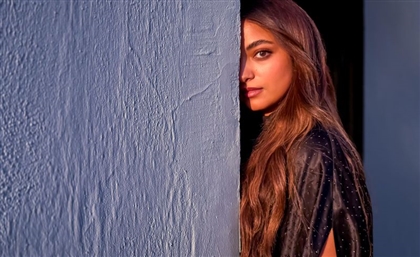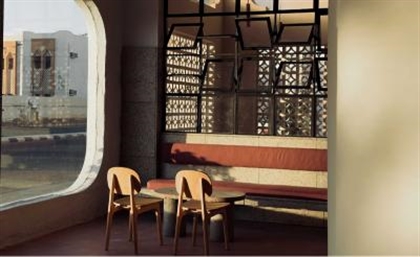Emirati Artist & Chef Moza Almatrooshi Refuses to Abide by Binaries
In Moza Almatrooshi’s universe, decay is sacred, food is revolution, and ageing is a pilgrimage. She cultivates art with each curious, unyielding question.
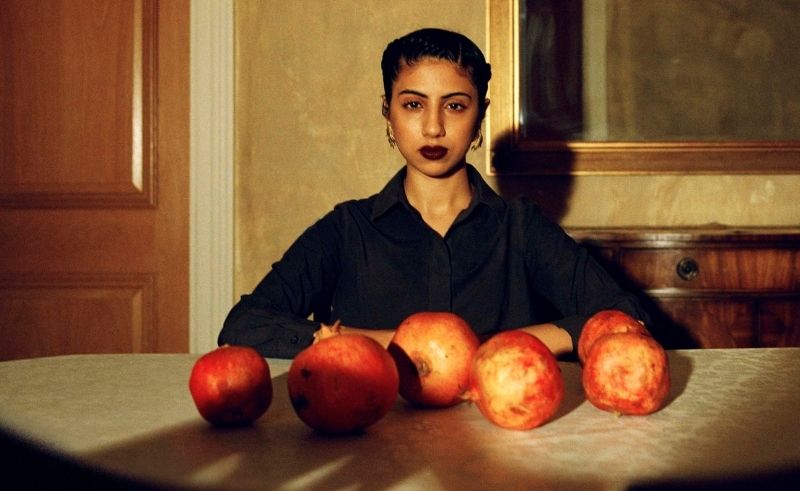
If there were ever a single image to stand for Moza Almatrooshi’s many lives as an artist, chef and mythmaker, it would be the bee. Over the last decade, bees have swarmed in and out of her work, at times as motif, at times as ecological responsibility, and at times as collaborators. In films, installations and landscaping projects, she has tracked their fragile migrations across the Arabian Peninsula, trained under local beekeepers, and even introduced melliferous flora into Sharjah’s traffic circles to nourish native hives.
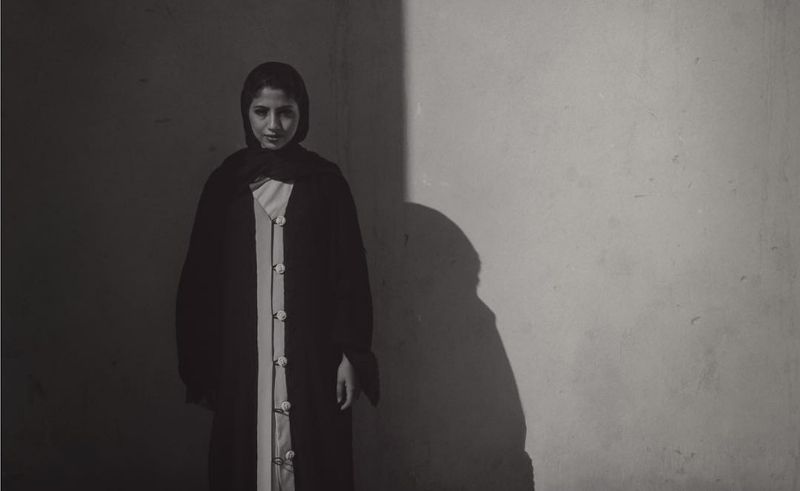
Almatrooshi's acclaimed video installations like 'To Whom the Sun May Be of Concern', in which she explores a magical realist narrative about a queen bee, and 'There Is an Edible Gold', a docufeature in which she shadows beemakers in the UAE, glide betwixt myth and biology, speculative fiction and fieldwork. These works eventually give way to hands in the soil and honey on the tongue. At the Sharjah Biennial, she introduced melliferous plants into municipal landscaping to help support native bees. “It became less about symbol and more about responsibility,” Moza Almatrooshi tells SceneNowUAE. “Not just to people, but to land, to the more‑than‑human.”
This is how Almatrooshi works: through one seemingly small element - nectar, bread, pomegranates - and pulling at it until it unravels into politics, memory and myth. The bee, perhaps more than any other motif, crystallises her refusal to separate human stories from the wider ecosystem. It is also where her voice begins to sound clearest: instinctive, layered, insistent.
“I live how I work and work how I live,” Almatrooshi says matter-of-factly. “Everything I professionalise - art, food, land - begins with curiosity. It’s the thread that refuses to snap.”
That thread runs back to childhood, in the restive mind of a middle child. Nonage flirtations with theatre, writing and design crystallised into an interest in architecture studies - until concrete reality intervened. “I loved the craft of building worlds. But interning at a firm, I saw how architecture drowns in pragmatism," Almatrooshi recalls. "I couldn’t contribute to more structures when I craved ephemerality.”
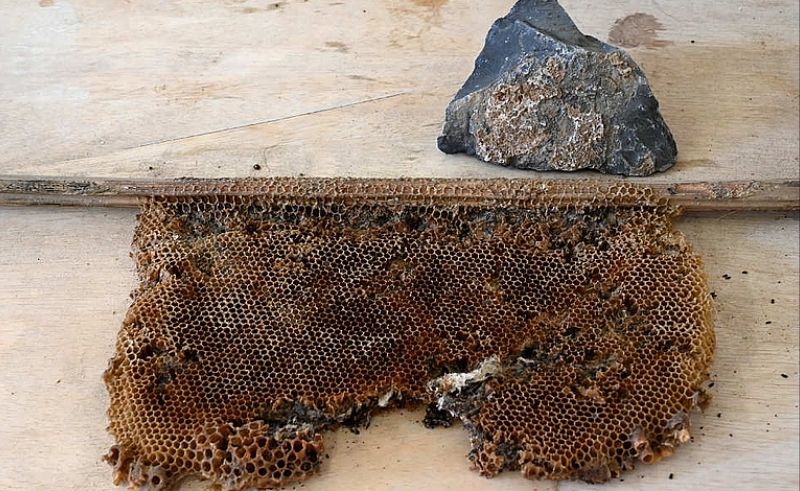
At London’s Slade School, she began to fixate on such concepts as decay and ecological transformation by making art around landscape erosion and crumbling infrastructure. “Nothing lasts, things decay or change form, even if not in our lifetime. It's inevitable.” Food entered almost stealthily into her work; the apparentness of decay with food almost instantly tied her down, and when she realised no chef would collaborate on her experiments, she became the chef herself. In an epistemological shift, she enrolled in culinary school weeks before the COVID-19 lockdowns.
From there, the political and sensory dimensions of food fermented into something radically her own, rooted in the urgency of the matter. “I never wanted to aestheticise food,” she insists. “I was looking at it more as a divisive element - how far it can be weaponised, and then stretching that historically, geographically, contextually in the Arabian Peninsula.” In her practice, meals are stages where Gulf identity, colonial supply chains and land sovereignty surface. Dishes are sites where single ingredients are examined not as culinary staples, but as political, historical and gendered objects.“I would never make a blanket statement, like 'food is political'.”
Almatrooshi's research has always been immersive, both visceral and horizontal. In studying honey, she apprenticed with Emirati beekeepers and documented clashes between imported hives and wild mountain species. “I’d hear 'save the bees' slogans," she says. "But here, imported bees dwarf native ones, devouring resources.”
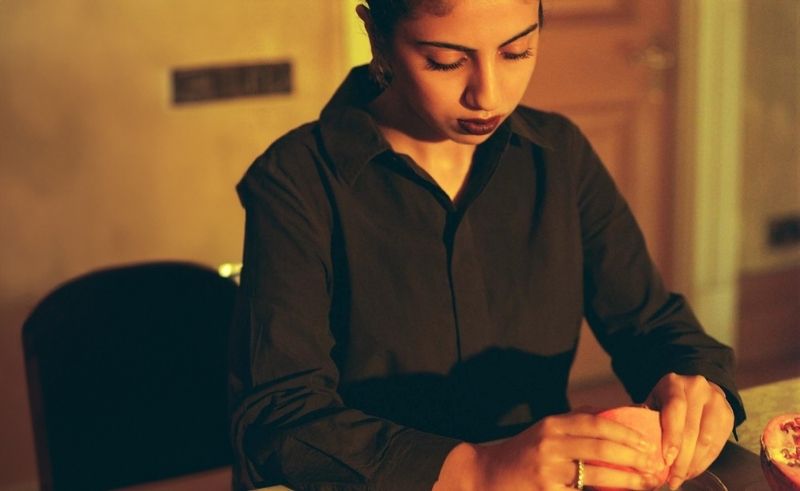
In The Agriculture School, she traversed shrinking farming communities in the UAE’s mountainous regions, reconstructing dried‑up springs and echoing farmers’ memories of abundance. “Farm‑to‑table is a myth,” she argues. “It sounds wholesome, yet it conceals labour hierarchies, water scarcity, colonial supply chains. Real food justice means listening to farmers, not speaking for them.”
Almatrooshi’s work has long investigated the systems we live by and the mythologies we inherit. Her recent trajectory signals a turn inward, however - not away from politics, but toward the unspoken terrain of personal evolution. Almatrooshi's recent art peels away the archetypes that once defined her: the goddess, the martyr, the ancestral seer. “I think I’ve broken away from symbolism,” she says. “Lately, I’m reckoning more with my own humanity.”
This attitude should not be confused for detachment. In pieces like her 2019 work, 'The Journey to Selsabeel' - her most exhibited, and, ironically, once most-disliked - Almatrooshi channels this evolving sensibility. “When I made it, I was disgusted. I wanted to throw up,” she says, laughing. “It’s like watching your child grow up to be someone you never expected, but you’re proud of them.”
It’s this tenderness coiled with terror that defines her newfound creative mindset. Over a decade in, Almatrooshi no longer sees her art practice as something to prove. “I used to attach my worth to artistic validation. Now? Even if I never exhibit again, I’ve lived lives through this work.”
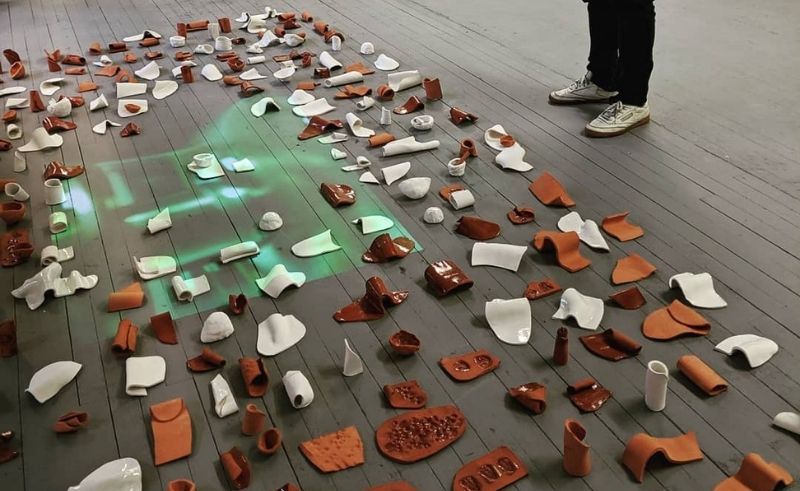
Her culinary journey, by contrast, is a younger limb of her practice - less armoured, more vulnerable. “You could criticise one dish, and I’d crumble. That’s where the imposter still lurks,” she admits. “I haven’t had the same years of rigour. But I’m learning to carry both - rigour in one hand, instinct in the other.”
“I never position myself as an author,” she says. “The work governs itself. It tells me what it needs. Sometimes, I pick up a camera I barely know how to use, and just see what comes.” This raw, instinctive approach often births some of her most striking outcomes. Lacking in technical vocabulary is a badge she wears happily, embracing this lack of polish as freedom.
Even as she retreats from the art world’s chatter, she stays attentive to art’s catalytic charge.“Art alone can’t fix what’s broken. It needs other systems to function. But it can move us. Stir something. Anchor us. Or help us escape.”
At once archival and alchemical, Moza Almatrooshi’s practice resists neat description. She is not in pursuit of a single emblem or identity, yet the bee remains a fitting stand‑in for her work: industrious, interdependent, fragile, and transformative. Just as colonies thrive by interconnection, her practice thrives by weaving land, politics and memory into one restless swarm.
So what’s next for someone no longer tethered to symbolism, but tuned to something even more fragile?
“I don’t know yet. But I’m listening.”
Photography by Eman Ali







